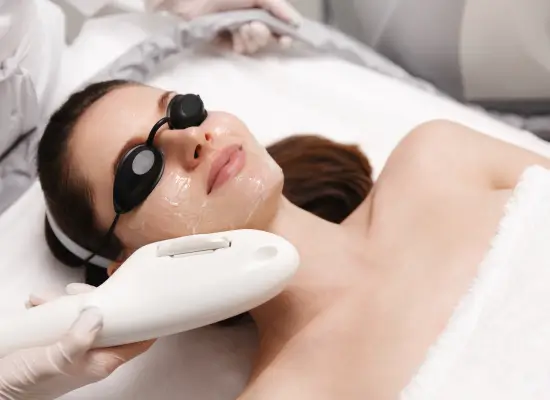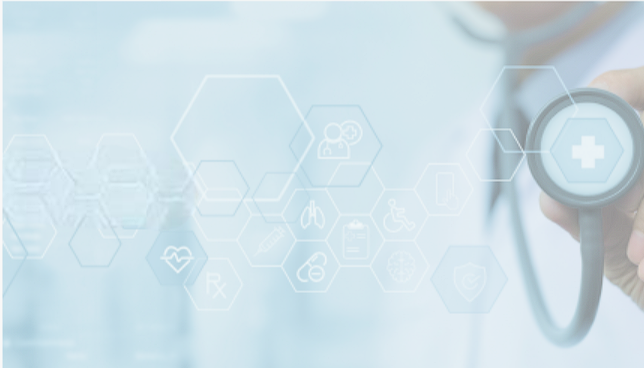No, Photofacial treatment is not painful. Patients might experience mild discomfort and redness after the procedure. A cooling gel can help minimise redness. The discomfort usually subsides within a day or two; however, if it persists, a dermatologist should be consulted.

Synopsis
Photofacial is a non-invasive skin treatment designed to help with pigmentation, fine lines, or injury marks. It improves the texture and tone of your skin by removing any unwanted marks potentially caused by sunburn, also known as photoaging. It helps treat dark spots and pigmentation. The appearance of freckles can also be reduced with the help of Photofacial.
Introduction
Over the years, the skincare industry has seen rapid growth with the development of advanced technologies that help address multiple skin concerns. More and more treatment solutions are coming into the market, which provide youthful skin and tackle stubborn skin problems. Photofacial is a revolutionary treatment solution which has gained popularity in recent times due to its effectiveness in treating skin discolouration, sun damage, and other skin concerns.
If you are searching for a good Photofacial treatment in Bangalore, then renowned skin treatment facility providers like Gleneagles Hospital should be your first choice. The expert dermatologist and seamless treatment solutions will provide the best results for your Photofacial and bring out the best version of your skin.
What is Photofacial?
Photofacial is also known as IPL, i.e., Intense Pulse Light therapy. It is a treatment for skin rejuvenation and utilises light-based technology to improve the overall appearance of your skin. The Photofacial treatment in Bangalore is targeted at treating multiple skin imperfections by delivering light pulses that seep deeper into the layers of the skin, stimulate collagen production and reduce pigmentation and acne marks. If you want to get rid of the marks and spots on your skin without going through painful procedures, then Photofacial is the right option for you. It is non-invasive and highly effective, offering you seamless skin with no pain.

Types of Photofacials
There are two types of Photofacial treatment in Bangalore. Both have performed differently and address distinct skin problems. Let’s discuss them one by one.
- IPL (Intense Pulsed Light) Photofacial: Intense Pulsed Light Photofacial therapy is done by sending pulses of broad-spectrum light through direct contact with the skin. It is more effective as it impacts the deeper layers of the skin. It is preferred for deeper skin conditions like broken capillaries and sun spots. It has to be performed by a specialised skin specialist. The process involves providing high-intensity pulses of light, which are outside the bandwidth of the laser and go into the second layer, i.e., the Dermis, and treat the skin issues. Multiple sessions are required for this type of Photofacial, and you will have to visit the clinic after 3 to 4 weeks for another session.
- LED (Light Emitting Diode) Photofacial: Light-emitting diode photofacial therapy is done with the help of a handheld device that emits different wavelengths of LED light onto the skin. Different coloured LED lights are used to treat different skin conditions. Blue light reduces acne, while red light is used for treating skin ageing by collagen stimulation. It is suitable for people with sensitive skin who want to address minor skin issues like freckles, blemishes, or pigmentation. The LED light penetrates the epidermis and treats surface-level skin issues. The chances of complications and side effects are comparatively less in this type of Photofacial.
Your health matters – get expert advice today.
How Does Photofacial Work?
Photofacials utilise light energy to treat skin problems. The light waves penetrate through the skin and target the melanin and haemoglobin cells. The penetrated light energy converts into heat, breaks down the pigmentation and boosts collagen production. With time, the treated area heals, leaving a clearer and more youthful complexion. The procedure has to be performed by an expert dermatologist and usually takes around 30 to 60 minutes, depending on the regions to be treated.
Benefits of Photofacial
Photofacials can be used to treat the skin of visible areas, such as the neck, face, shoulder, hand, and back. Photofacials have several benefits. Some of them are-
- Reduces Hyperpigmentation- Photofacials are extremely beneficial for removing dark spots, pigmentation, and sunburn marks from the skin.
- Reduces Wrinkles and Fine Lines- By stimulating collagen production, a Photofacial can help reduce the appearance of wrinkles and fine lines.
- Treats Redness and Rosacea- Patients with rosacea and skin redness get relief after a Photofacial as it deep-treats your skin and reduces redness.
- Improves Skin tone and texture- A Photofacial will help not only make your skin look prettier but will also improve the texture and tone by boosting collagen production.
- Decreases Freckles- If you want to reduce the appearance of freckles, then an IPL Photofacial would be helpful.
- Minimises Pores- Photofacials also reduce large pores, providing a blurring effect and making the skin look smoother.
Who Should Not Get a Photofacial Done?
Although a Photofacial is generally safe, not every skin type is suitable for a Photofacial. Anyone with a darker skin tone should not go for a Photofacial as there is a higher risk of hyperpigmentation and sunburn. Apart from that, if you are having an active skin infection or breakouts in the region to be treated, avoid getting a photofacial done. Wait till your skin fully heals from the infection, and then consult a dermatologist for Photofacial treatment in Bangalore. Pregnant women and breastfeeding mothers should avoid photofacials. If you have keloid scars or are taking photosensitive medications like Accutane, you should consult a doctor before a photofacial and in most cases, it should be avoided.
How Often Should I Get a Photofacial?
The frequency of your Photofacial will depend on your skin type and the issues you are treating. Generally, an average of 3 to 5 sessions spaced every 3 to 4 weeks would help in bringing out the best outcomes. A maintenance session every once or twice a year can help sustain the benefits for longer.
Pre and Post-Care Instructions for Photofacial
Some instructions before and after the procedure will help increase the effectiveness of your Photofacial treatment in Bangalore.
- Pre-Treatment Care- Prevent any sun damage two weeks before the procedure and discontinue using any active skincare products (like retinol, glycolic acid, etc). Keep your body hydrated and moisturise your skin.
- Post-Treatment Care- Apply a broad-spectrum (SPF 30 or higher) sunscreen to avoid sunburn. Avoid taking any sauna or hot showers and any strenuous activity 48 hours before the Photofacial.
Why Choose Gleneagles Hospital for Photofacial?
Gleneagles Hospital is a credible option for dermatology and cosmetic treatments, offering state-of-the-art facilities and expert dermatologists in the town. Here’s why you should consider getting a Photofacial at Gleneagles Hospital.
- Highly Qualified Dermatologists- Gleneagles provides you with cosmetic surgery and facial treatments from skin specialists who work collaboratively to ensure safe and effective Photofacial treatment in Bangalore.
- Advanced Technology- We use the latest IPL and LED devices that meet international treatment standards and provide optimal results to patients.
- Personalised Treatment Plans- Dermatologists at Gleneagles Hospital follow a personalised treatment approach to provide the right treatment plan specially designed for your skin type.
- Comprehensive Aftercare- At Gleneagles Hospital, you will get detailed post-treatment guidance and personal attention for best results and to ensure a safe treatment.
The Department of Dermatology and Cosmetology at Gleneagles Hospital specialises in providing a smooth treatment experience to the patient. The skin procedure at Gleneagles is cost-effective and personalised to make the entire procedure ten times easier for you. Our expert dermatologists have a proven record of performing intricate skin procedures with the highest level of perfection and bringing out the best possible outcomes for patients.
Our Doctors
View allFrequently Asked Questions
Initial improvements can be noticed within a week of the treatment. For accurate results, multiple sessions have to be taken. Precise results will be visible after 3 to 5 sessions of the Photofacial.
It is advised to leave your skin bare for at least 24 hours to let it heal. Immediate makeup application should be avoided. Consulting a dermatologist is recommended if makeup application is necessary.
No, there are no major side effects of a Photofacial. Minor side effects might occur and are temporary. Patients might experience mild redness, swelling, and temporary darkening of spots, which is common and subsides within a few days.
Yes, Photofacials may be combined with other skin treatments like chemical peels, microdermabrasion, etc, for enhanced results. Consult your dermatologist for a personalised plan according to your skin type and the issue you are dealing with.











